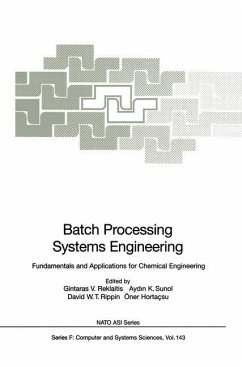
Architecture of Systems Problem Solving
Versandkostenfrei!
Versandfertig in 1-2 Wochen
39,99 €
inkl. MwSt.
Weitere Ausgaben:

PAYBACK Punkte
20 °P sammeln!
One criterion for classifying books is whether they are written for a single purpose or for multiple purposes. This book belongs to the category of multipurpose books, but one of its roles is predominant-it is primarily a textbook. As such, it can be used for a variety of courses at the first-year graduate or upper-division undergraduate level. A common characteristic of these courses is that they cover fundamental systems concepts, major categories of systems problems, and some selected methods for dealing with these problems at a rather general level. A unique feature of the book is that the...
One criterion for classifying books is whether they are written for a single purpose or for multiple purposes. This book belongs to the category of multipurpose books, but one of its roles is predominant-it is primarily a textbook. As such, it can be used for a variety of courses at the first-year graduate or upper-division undergraduate level. A common characteristic of these courses is that they cover fundamental systems concepts, major categories of systems problems, and some selected methods for dealing with these problems at a rather general level. A unique feature of the book is that the concepts, problems, and methods are introduced in the context of an architectural formulation of an expert system referred to as the general systems problem solver or GSPS-whose aim is to provide users of all kinds with computer-based systems knowledge and methodology. The GSPS architecture, which is developed throughout the book, facilitates a framework that is conducive to a coherent, comprehensive, and pragmatic coverage of systems fundamentals--concepts, problems, and methods. A course that covers systems fundamentals is now offered not only in systems ~cience, information science, or systems engineering programs, but in many programs in other disciplines as well. Although the level of coverage for systems science or engineering students is surely different from that used for students in other disciplines, this book is designed to serve both of these needs.












